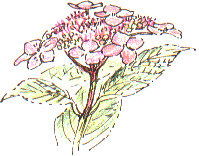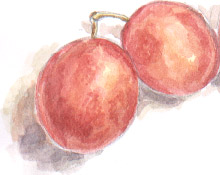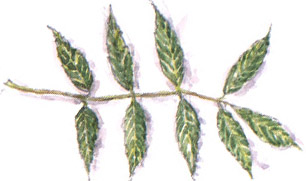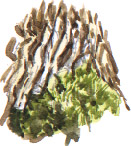
Life Under the LogSunday 27th August 2000, West Yorkshire  I SKETCH Lacecap Hydrangea and a few of the Victoria Plums from my Mum's garden. The Victoria Plum tree was old when we moved into the house in the 1950s. It still crops heavily most years, and in exceptional years the branches need propping up to support the weight of the fruit. I enjoyed painting these almost life-size in watercolour, so my apologies for the extra download time. This must be one of the few pages in this diary where I've sketched everything from life during the day, rather than drawing from memory when I write up the diary on an evening. I'd like to include more sketches from life, so the file size of pages will probably go up. In our garden, a young Blackbird has been attracted to the red berries on the Honeysuckle. It sits on the hedge for a minute or two, eyeing up the possibilities, then flies to a perch where two bunches of berries are in easy reach.   Ash trees have lost a few leaves in last night's thunderstorm. Moss grows at the foot of a trunk. Ash trees have lost a few leaves in last night's thunderstorm. Moss grows at the foot of a trunk.The Secret World of WoodliceRelated LinksWoodlice Online; the structure, behaviour and adaptations of woodlice.Woodlice on the Web; care, a couple of experiments, links and a key to commoner woodlice of Britain. Woodlouse wizard an identification key.
|